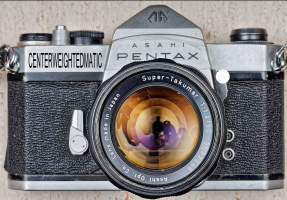The Nikon F2, if Nikon had fitted it with a selective or spot exposure measuring, would have been THE perfect camera. That's the only feature I missed, and the main reason why I often prefered the Leicaflex SLs. Otherwise, the F2 was in every other feature far superior, an absolutely gorgeous camera! And a beauty too!The F2's viewfinder is like going to the IMAX cinema. I picked up my dad's F2 to get rid of an expired roll of T-Max and honestly taking the pictures was more fun than looking at them (I might also have messed up the development, but luckily no one knows that).
The mirrorless Nikons are cameras...
Upvote
0

